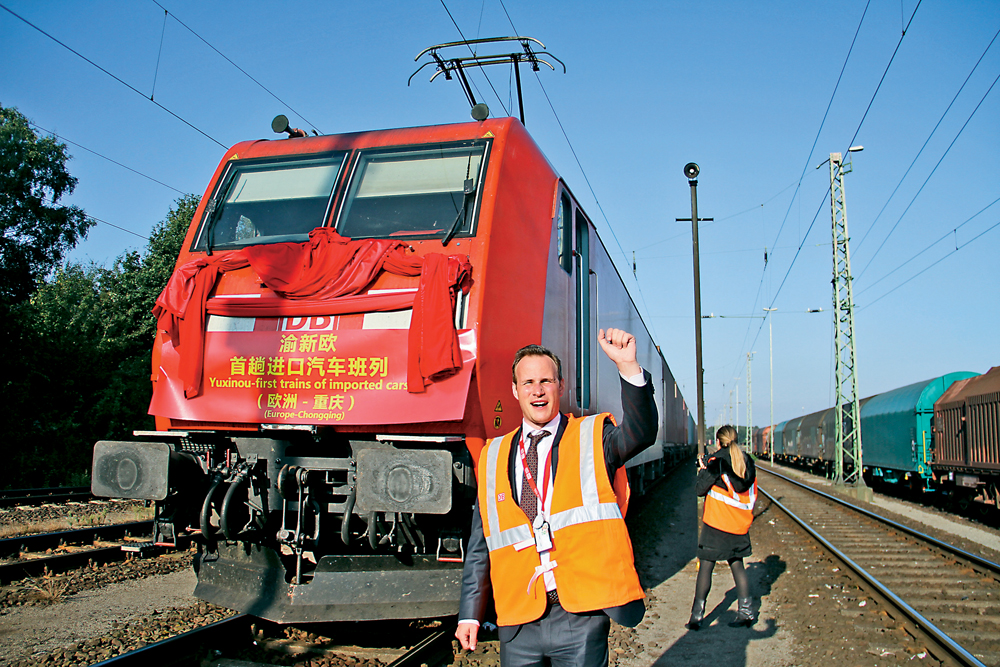The implementation of the Belt and Road Initiative in the past three years, and its inclusion in Resolution No. A/71/9 of the 71st session of the UN General Assembly, has advanced the goal to build a community of long-term common development. The next steps require giving priority to important institutional innovations and rule-making, including the Belt and Road multilateral investment framework, and rules and mechanisms that govern global trade. This will not only provide opportunities for promoting China’s industrial capacity cooperation and manufacturing upgrading, but also help drive a new round of prosperity-oriented growth for global trade and new globalization.

According to data from China’s Ministry of Commerce, China’s outbound direct investment in 53 Belt and Road countries in 2016 amounted to $14.53 billion, accounting for 8.5% of the total ODI. In the same year, Chinese companies inked new contracts valued at $126.03 billion in 61 Belt and Road countries and regions, accounting for 51.6% of China’s total new engineering contracts; and their revenue from the Belt and Road economies amounted to $75.97 billion, accounting for 47.7% of their total overseas revenue. However, bilateral/multilateral/plurilateral investment rules and framework are still lacking. The remedy is a gradual implementation of the Belt and Road multilateral investment framework, in particular, the creation of new investment rules based on the non-discriminatory treatment and “negative list” approach.
In terms of economic policies, one urgent task is to eliminate barriers created by varying trade policies among the Belt and Road countries. Another is to vigorously promote the connectivity and integration of standards, rules and regulations. Because economic cooperation among the Belt and Road countries is still in its infancy, connectivity and communication among them need development, and efficient customs clearance and supervision are still being explored. Achieving the integration and unification of regional supervision is extremely important.
For the long-term development, it will be a natural trend to build a high-standard, rule-oriented free trade network among the Belt and Road countries. To facilitate trade in the Belt and Road regions, China must strengthen multifaceted and multilevel regional cooperation among different Chinese departments. In the fields of merchandise trade, investment protection, rules of origin, customs formalities, trade remedies, quarantine measures, technological barriers, intellectual property rights, government procurement, labor and environmental protection and temporary entry visas, reasonable and fair institutional arrangements should be made to make trade easier. At the same time, Asia and Europe should do more to integrate their planning and technical standards for the construction of infrastructure facilities to ensure the smooth operations of the main network of infrastructure facilities. Furthermore, an improved infrastructure network could help reduce the costs of trade, promote cross-border flows of production materials, expand the scopes of trade and investment, deepen the market segmentation, and promote regional economic integration.
To date, China has constructed or is constructing 20 free trade areas involving 32 Belt and Road countries. China has signed 12 free trade agreements involving 20 countries and regional organizations, including FTAs with ASEAN, Australia, Singapore, Pakistan, New Zealand, Chile, Peru, Costa Rica, Iceland and Switzerland, the Closer Economic Partnership Arrangement with Hong Kong and Macao, and the Economic Cooperation Framework Agreement with Taiwan, which are all being implemented. Beijing is in the process of negotiating free trade agreements with the Gulf Cooperation Council, Sri Lanka, Norway, Japan and South Korea, as well as the Regional Comprehensive Economic Partnership and the upgraded version of the China-ASEAN FTA (10+1). With a network of high-standard free trade areas being planned and constructed, a Belt and Road free trade area can be anticipated.
Furthermore, financial cooperation and establish a monetary and financial cooperation network within the geography of the Belt and Road must be deepened. By making use of the platforms such as the Asian Infrastructure Investment Bank and the Silk Road Fund, and the capital advantage of the China Development Bank and the Export-Import Bank of China, multilateral financial cooperation between China and the countries along the Belt and Road should be vigorously promoted, and arrangements for renminbi-clearing within the Belt and Road framework should be comprehensively improved. Pragmatic cooperation between China and the China-ASEAN Interbank Consortium and the SCO Interbank Consortium should also be deepened. Building mechanisms and channels for smoother flows of capital will help develop the stability of the Asian monetary system, the investment and financing system and the credit system; help optimize emerging multilateral development financial institutions; and help construct the new framework for long-term global financial support.


